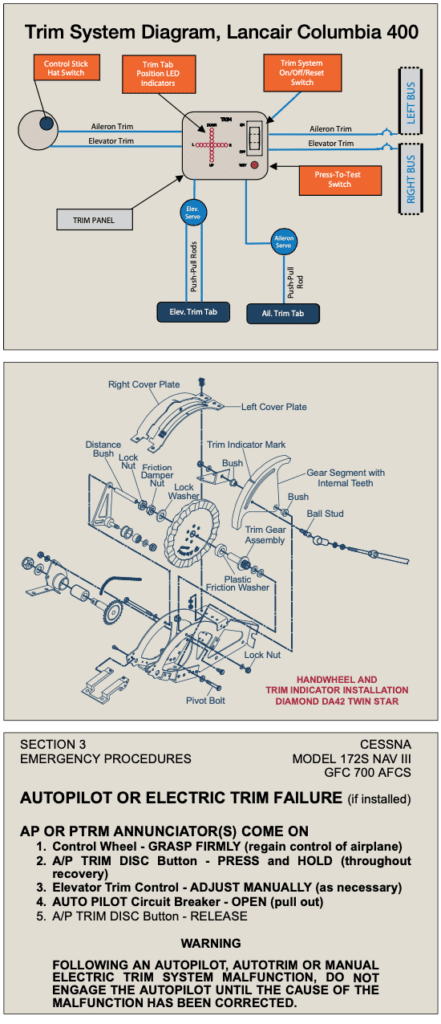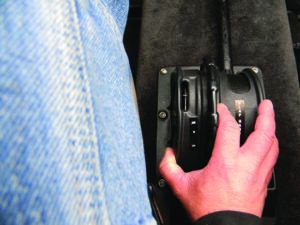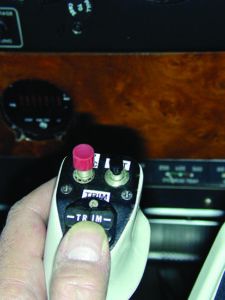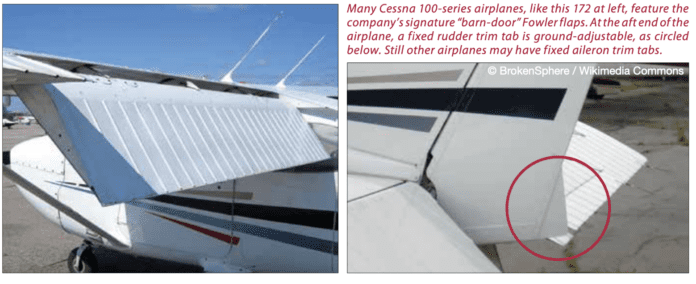One the things every primary student learns somewhere along the way to their certificate is the difference between primary and secondary flight controls. Distinguishing between them isn’t hard: The primary flight controls are ailerons/spoilers for roll, an elevator/stabilator/canard for pitch and some kind of rudder for yaw. Those are the controls we regularly manipulate to put the airplane where we want it to be.
It’s easy to simply toss every other control system available to the pilot into a big basket labeled “secondary.” And it’s not inaccurate. We’re talking, of course, about systems like wing flaps and trim, perhaps spoilers and perhaps some kind of leading-edge device, though both of the latter are relatively uncommon in the fleet as a whole. Labeling these controls as secondary doesn’t mean they’re harmless: When they fail, they can create their own mischief, and this will serve as your regular reminder that there’s no substitute for thorough systems knowledge of anything you fly.
WING FLAP SYSTEMS
The flaps on the wing’s trailing edges usually are the only secondary control a typical primary student can name. That’s because they’re regularly deployed for landings, slow-flight and stall practice, among other flight regimes. We all should know they increase lift and drag, since there’s no free lunch, and can drastically limit performance if they get stuck and can’t be retracted.
The simplest flap deployment and retraction system—a stout handle that stows flat on the floor, sometimes called a “Johnson” or “Armstrong” bar— is found on many older designs. It has the virtues of simplicity, precise control of extension/retraction times and at-a-glance indication of flap position. They also work after an electrical system failure, unlike many other airplanes’ flap systems.
Meanwhile, electric-powered flap systems often offer a pre-select function, allowing the pilot to “set and forget” them during periods of high workload, typically in both extension or retraction mode. A separate indicator may or may not be present to inform the pilot how much flap has been extend and how much remains. Still other electric systems have a three-position switch setting: up, half-extended or fully extended. For that matter, even the Johnson-bar systems have notched positions in the mechanism for, say, 10-, 20- and 30-degrees flap deployment.
A third system design is hydraulic, typically using an engine-mounted pump to lower and raise the wing flaps. Piper used hydraulics on its PA-23 series of light twins (Apache and Aztec) as well as the PA-46 Malibu and its siblings.
As hinted at above, the only real problem with electric flap systems is when the electrical system fails. It’s likely the flaps will be retracted when that happens, so you’ll have a no-flap landing in your future if you can’t restore the electrons. If the flaps are fully deployed when the electrons go on strike, you could have a problem, especially during a go-around in high density-altitude situations. Importantly, as with electric flaps, failure of a hydraulic flap actuating system also means the flaps likely will remain in their position as of the failure. It depends on the system.

The schematic at top right depicts the electric trim system of the Lancair Columbia 400 while the middle diagram shows the components of the Diamond DA42 Twin Star’s manual trim wheel. Any of these components can fail, making pitch trim adjustment problematic or impossible.
At bottom right is the emergency procedure entry for an autopilot or electric trim failure aboard a G1000-equipped Cessna Skyhawk SP with a Garmin GFC 700 airplane flight control system.
FLAP FAILURES
When considering flap failures, the best case is when they fail to extend at all and remain in the stowed/retracted position. If that happens, consult your airplane’s documentation and the no-flap landing checklist. Typically, it will call for a slightly higher approach speed and maybe a different touchdown technique. Be aware that a higher approach speed will lengthen the landing distance required.
Many pilots may consider a failure in the extended position to be the worst-case flap scenario, because it can severely restrict climb capability. It may not be, though: a split-flap or asymmetric deployment situation can be, however. That’s when one of the flaps extends further than the other one, creating a rolling moment that may be hard to counter with the ailerons at slow speeds, if at all. In any event, one wing will stall before the other one, which means you’ll also want some extra speed when approaching to land, just like when they wouldn’t extend. There are two tricks to this.
The first one involves maintaining enough airflow over the ailerons to control the asymmetric flap condition, since one wing is creating more lift than the other. When confronting an asymmetric flap situation, it’s typically a good idea to do some controllability testing to see how slow you can go without losing roll control. Once that speed is determined, add five knots or so and use that higher speed as your touchdown target. Yes, it may be significantly faster than even a no-flap landing. Choose your runway accordingly.
The second trick is if the flaps are deployed asymmetrically while the airplane is banking. The obvious worst-case scenario involves failure to catch the split-flap condition while banking, say from downwind to base, and encountering a rolling moment which tosses the airplane on its back. One cure for this scenario is to never, ever, deploy wing flaps while banking. In straight-and-level flight, it’s far easier to detect and counter any unwanted rolling moment as the flaps come down or go up.
PITCH TRIM SYSTEMS

Manual, unpowered pitch trim systems are fairly simple: A cable is connected to the trim surface directly via a cable or a pushrod. Adjusting the pitch trim wheel, crank or other control moves the surface. Some get bogged down in discussing whether the trim surface is a servo tab (moves in a direction opposite the control input and is typical with elevators) or an antiservo tab (moves in the same direction as the control input, which is typical with stabilators), but that’s basically a distinction without a difference. Other trim systems dispense with a trim tab and reposition the entire horizontal stabilizer to change its angle of attack and help eliminate control forces.

A manual trim system has a limited number of failure modes. The cable or other linkage can break, rendering the trim system inoperative. In such an event, you won’t have the ability to trim out pitch control forces. Manual trim systems also can jam, perhaps because the cable got loose on one end or at a pulley. To ease your workload, adjust power to a more comfortable speed. You may want a longer runway than normal, for a greater error margin.
The fun begins when we add electric trim or an autopilot to the system, which introduces a new set of potential failure modes. Of them, the one with the greatest potential for losing control is the pitch trim runaway. The scenario calls for some kind of switch or controller failure, resulting in unwanted activation. Depending on the system, the airplane can get out of trim quickly, requiring a timely response from the pilot. In addition to correcting the out-of-trim condition, the pilot needs to disable the trim system, and then return to controlled flight. The previous page reproduces the electric trim runaway checklist for a Cessna 172S Skyhawk SP.
All of those tasks can make for a high workload at a time when greater than normal force needs to be applied to the pitch control. In extreme situations, shutting off the master switch to disconnect the autopilot or electric trim may be necessary.
IS IT REALLY SECONDARY?
A flaps or trim system failure certainly can be an emergency, at least initially. As always, the keys to success involve system knowledge, good airmanship, checklist use and practice. Feel free to go out and simulate trim failures, for example, noting the control forces needed. When they fail, flaps, trim and other secondary controls can become primary concerns.




